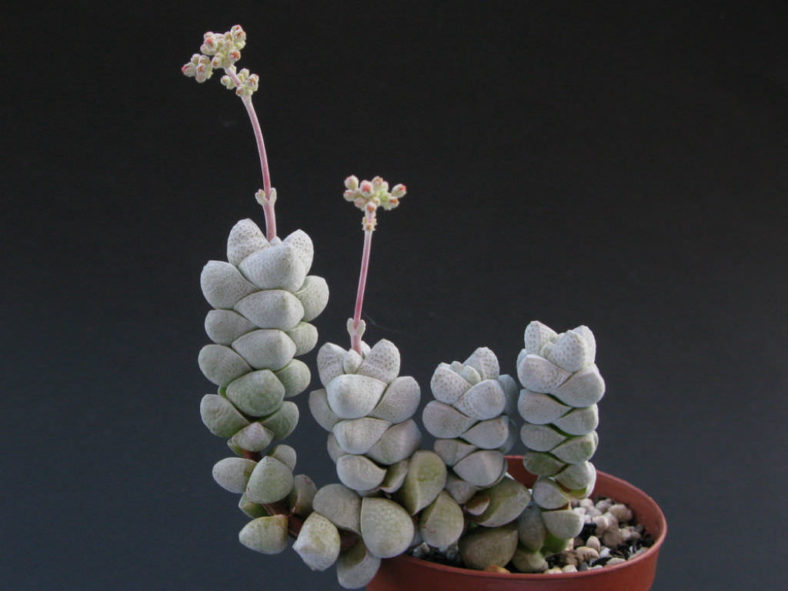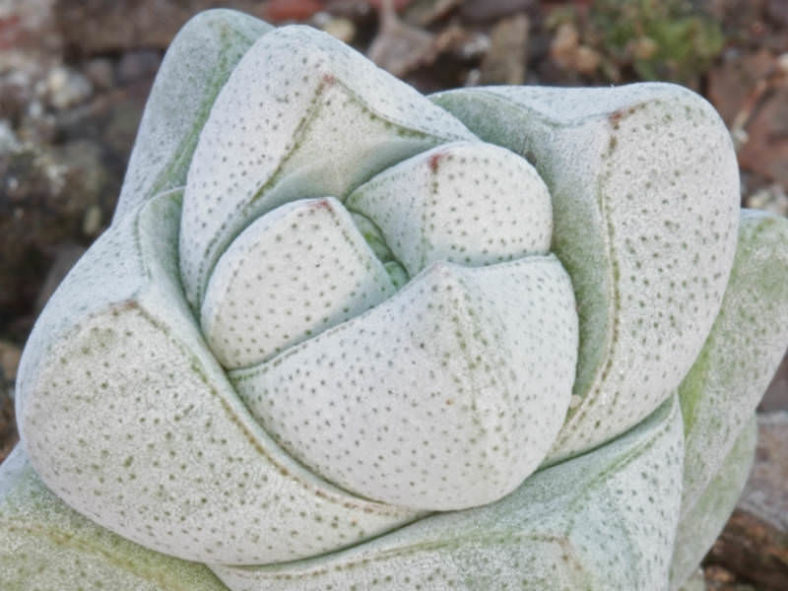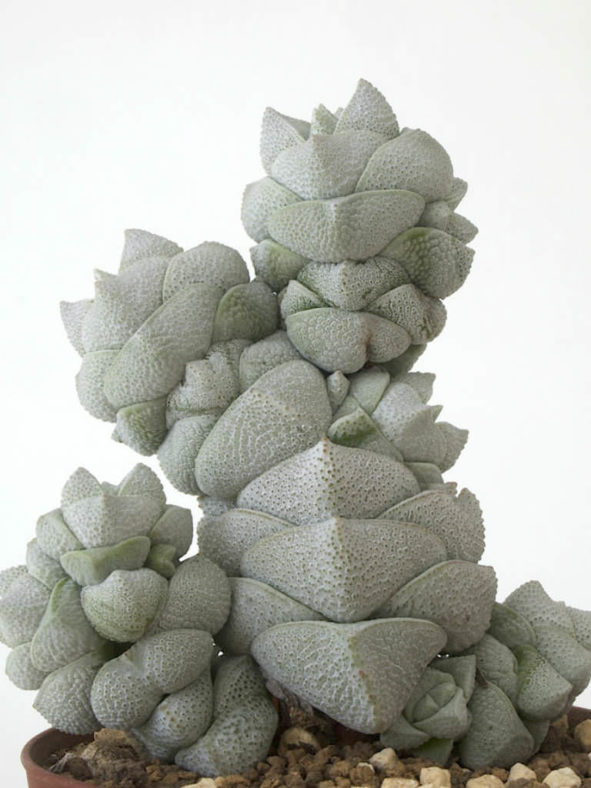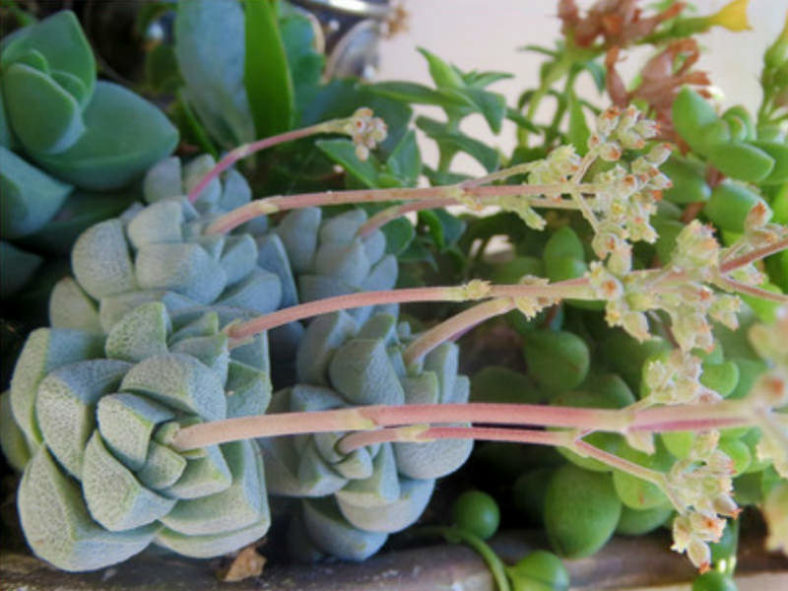Scientific Name
Crassula deceptor Schönland & Baker f.
Synonym(s)
Crassula arta, Crassula cornuta, Crassula deceptrix
Scientific Classification
Family: Crassulaceae
Subfamily: Crassuloideae
Genus: Crassula
Etymology
The specific epithet "deceptor" (pronounced "dee-SEP-tor") means "deceiver, betrayer" and refers to the resemblance of this species with small, pointed stones.
Origin
Crassula deceptor is native to Namibia and South Africa, specifically the Northern Cape province.
Description
Crassula deceptor is a dwarf, columnar succulent with short, erect branches and thick, fleshy leaves tightly packed in overlapping pairs along the branches. It can reach a height of up to 6 inches (15 cm). The leaves are grey-green, covered in white papillae, ovate-triangular, and can measure up to 0.8 inches (2 cm) long.
The tiny flowers are cream-colored, fading to brown, and produced on a branched spike with loose cyme.
Hybrids

Hardiness
USDA hardiness zones 10a to 11b: from 30°F (-1.1°C) to 50°F (10°C).
How to Grow and Care
Crassulas are easy to grow but susceptible to mealybugs and fungal diseases. As with all succulents, overwatering is fatal. So, err on being too dry rather than too wet. Never let your plant sit in water. If you water from beneath by allowing the plant to sit in a saucer, pour off any excess water after a few minutes.
These succulents are generally started by division, offsets, or leaf cuttings. Crassulas can be easily propagated from a single leaf. Place leaves into a potting mix for succulents and cover the pot until they sprout.
Repot as needed, preferably during the warm season. To repot your Crassula, ensure the soil is dry before repotting, then gently remove the pot. Knock away the old soil from the roots, removing any rotted or dead roots. Treat any cuts with a fungicide. Place the plant in its new pot and backfill it with potting soil, spreading the roots as you repot. Leave the plant dry for a week or so, then water lightly to reduce the risk of root rot.
Learn more at How to Grow and Care for Crassula.
Links
- Back to genus Crassula
- Succupedia: Browse succulents by Scientific Name, Common Name, Genus, Family, USDA Hardiness Zone, Origin, or cacti by Genus
Photo Gallery
Click on a photo to see a larger version.


